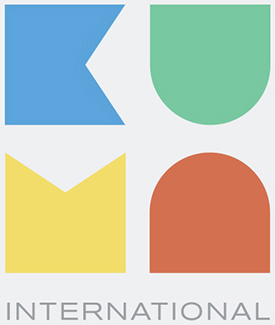Selma Ćatović Hughes
December 8 2020 at 18:00 CET
You missed the talk? Watch it on our YouTube channel!

Selma Ćatović Hughes grew up in Sarajevo, Bosnia. In the summer of 1995, she received a scholarship to continue with her studies in the US, leaving her war-torn country on the brink of culminating a three-year conflict. Pursuing architecture and design as her carrier path, Selma’s childhood journey guided her as she explored the world around her. Intrigued by the ritual of unveiling and exploring that fine line between literal and phenomenal beauty, Selma has experimented on a number of mixed media projects of different scales, materials and functionality, creating a transformation from plain to desirable. She has taken part in art and architecture exhibitions in USA, Chile, Bosnia and UAE. Selma is currently an adjunct faculty at the American University of Sharjah and teaches Design Foundations.
Visual Storytelling
“With cities, it is as with dreams: everything imaginable can be dreamed, but even the most unexpected dream is a rebus that conceals a desire or, its reverse, a fear.”
–Invisible Cities by Italo Calvino
The city, which cannot be expunged from the mind, is like an armature; a honeycomb in whose cells each of us can place things we want to remember. Between each idea and each point of the itinerary, affinity or contrast can be established, serving as an immediate aid to memory. Memory’s images, once they are fixed in words, are erased. Verbally immersing another person into the exquisite veil of a place, carefully constructed with threads of emotion, texture, light and sound, creates the series of new memories. These memories take you on a journey that can be imagined exactly as they are meticulously described; or, perhaps your journey evolves into a new set of memories, intertwined with personal reflections.
As a war survivor and an immigrant, my story is not unusual. It was not unusual 25 years ago when I left Bosnia; it would have not been unusual after the WWI or WWII when ships of immigrants were arriving to the “promised land” in search of better life; and it certainly is not unusual when compared to current vast numbers of refugees from Syria, escaping their homeland chaos…just to live another day.
But each of our voices is unique and need to be preserved and heard. The human suffering and perseverance cannot be only measured by numbers of the dead and the survived. The depth of each personal story carries a magnitude of particular (and often peculiar) aspects of one’s daily life under such incomprehensible circumstances. What comes as a surprise to a lot of people listening to these survival stories is the endurance and pace at which we normalize our daily routine, no matter how extraordinary it is. The impact that social conditions have on architecture, art, culture, and ultimately, people are extraordinary and life-altering. The wounds can heal, but scars are forever… and the memory of how we got those scars is eternal.
* Visual Storytelling is work in progress. It is a malleable project where old memories (re)surface and merge with visual flashbacks.
